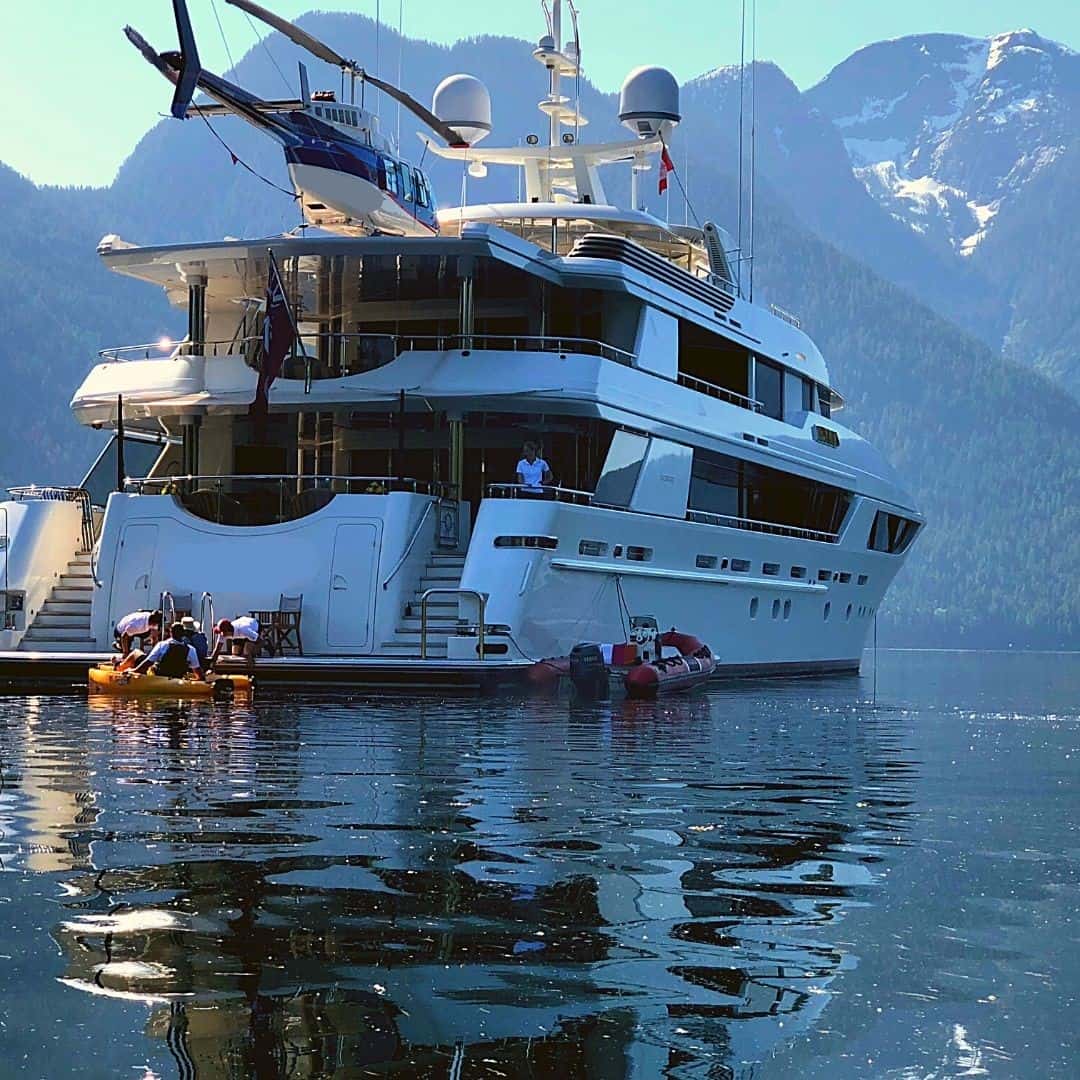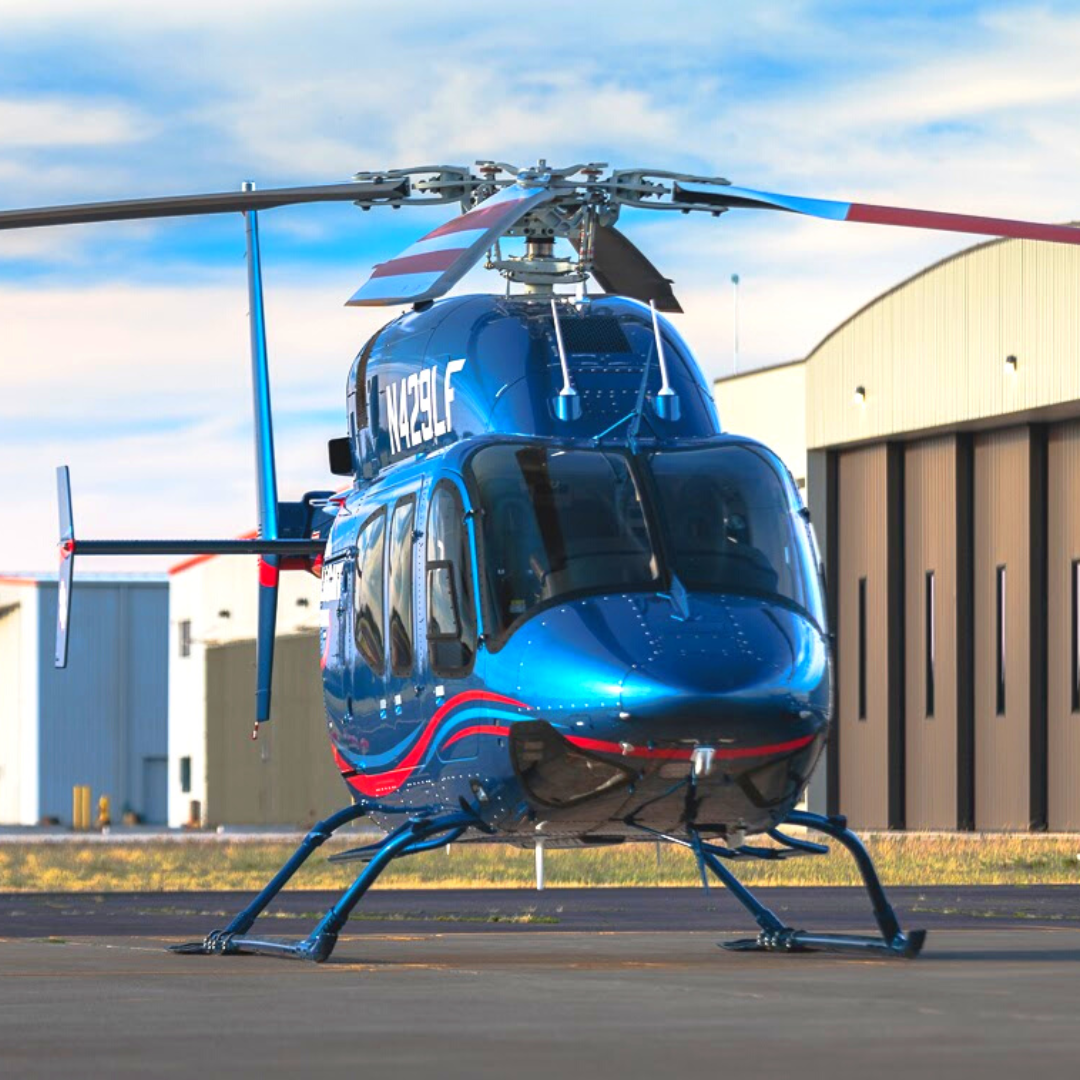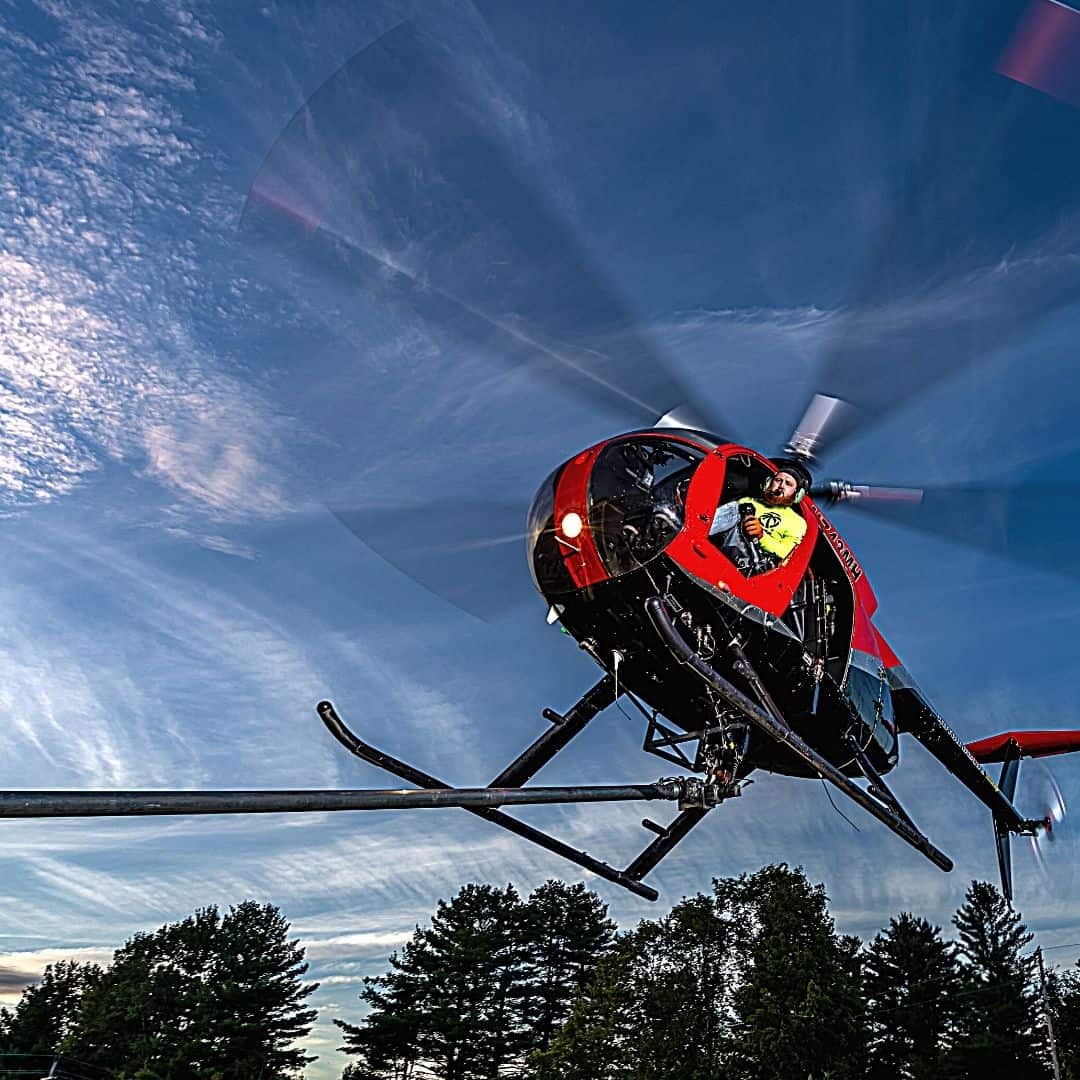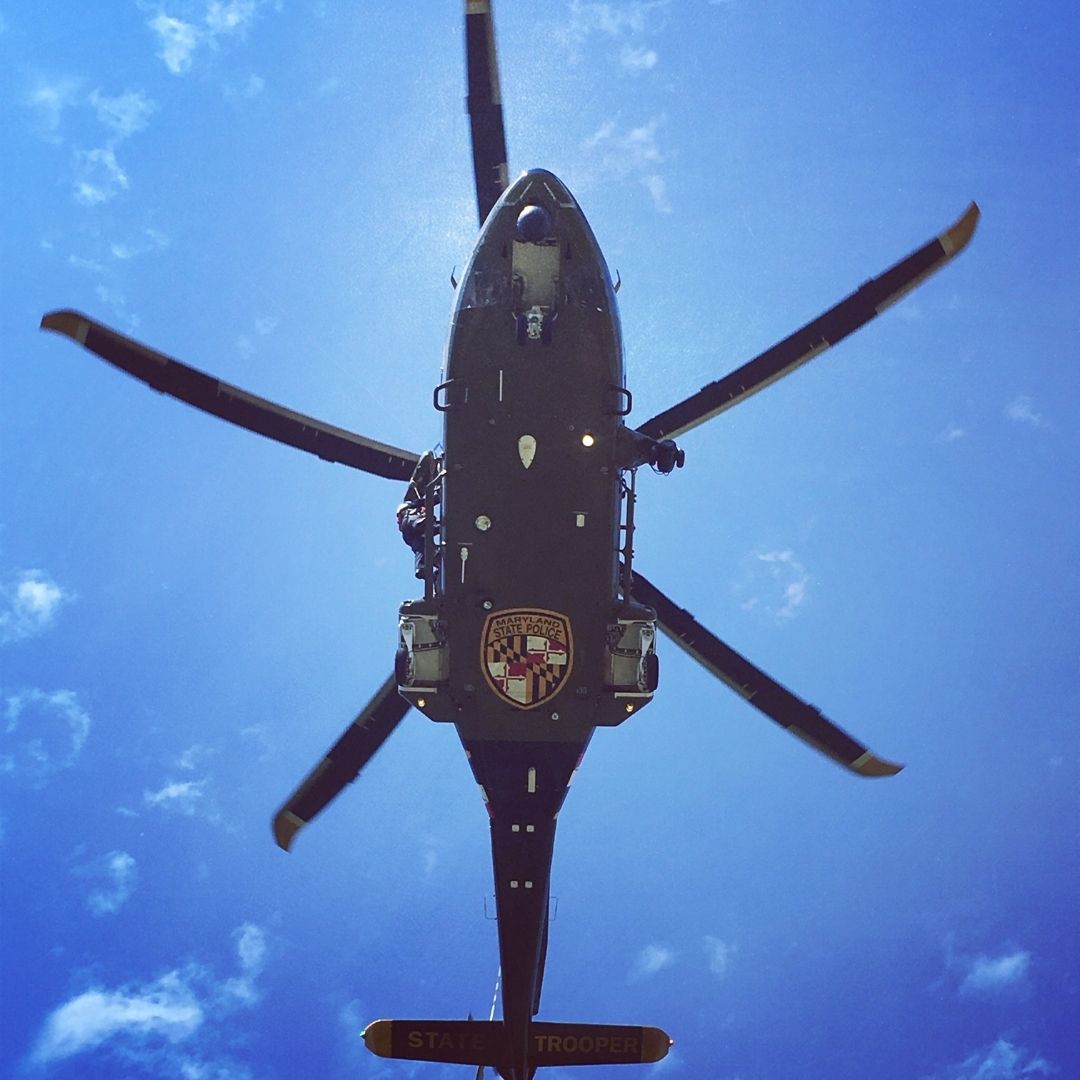by Jim Mackay
While there are no reliable numbers, published estimates suggest there are approximately 300 yachts around the world capable of safely supporting helicopter operations. During the summer of 2018, I was fortunate enough to fly from a 50-meter (164-foot) private yacht. The couple who owned the boat are both certificated helicopter pilots, although the husband was no longer actively flying and the wife had fewer than 500 hours total time. My 150-day contract included flying with and instructing the wife – in a meticulously maintained Bell BH-206LIV LongRanger. The cruise plan included departing Seattle, WA on May 1st to cruise the Inside Passage and Gulf of Alaska, then returning to the Seattle-area at the end of September.


When I first saw the position listed on www.VerticalReference.com and contacted the boat owner’s aviation manager, he already had another pilot under consideration. I thanked the manager, indicated I was flexible, available, and if the situation changed, asked him to keep me in mind. A couple of weeks later, after the other pilot withdrew, the manager called and said because I had been responsive and professional, he wanted to invite me to Seattle to interview and meet the owners. The interview went very well and I was contracted for the duration of the cruise.
Superyacht flying contracts may include a variety of arrangements. Mine stipulated $450 per day with no benefits. Room and board, uniforms, and travel expenses (to meet the boat in Seattle and return home to Boston at the conclusion of the contract), were also included. At the time I had around 200-hours of BH-206 time but was not current in one. So, I fronted $6,500 for a two-day, -206LIV refresher course and negotiated into my contract the cost would be reimbursed as an expense upon successful completion of the cruise. Onboard, I was not required to complete any duties except those related to flying the helicopter. In fact, the deck crew untied and secured the aircraft for flight operations, washed it, and refueled it (from the 1,000-gallon micro-filtrated Jet A supply onboard). During the course of the summer, we flew once every week or two. About once a week, at the request of the owner, I taught a ground lesson in the main salon or dining room. When not flying or instructing, my time was my own. When we were alongside a dock, after coordinating with the Captain and signing out, I was free to depart the boat and only had to return prior to the scheduled departure time.


Life aboard the boat:
The crew was amazing! Several became friends and our lives continue to intersect. In mid-2019, I airlined to Ohio, joined our boat’s Engineer – a student pilot at the time – and had a great adventure flying a Cessna CE-172 he purchased back to Port Angeles, WA in two days. In February, 2020, the senior deckhand left the boat, returned to England, and is actively pursuing his Commercial helicopter pilot certificate. In August 2020, I briefly reunited with the owner and crew at the Auke Bay, Alaska marina during their August 2020 cruise.
My accommodations aboard were very nice! The day prior to departure, when I first boarded, the Captain offered me a choice of spacious and comfortable guest cabins, instead of berthing me in the much smaller crew spaces.


Of course, put any nine people in a confined space for months at a time, and there will be conflicts and irritations. Working out in the onboard gym, watching a movie in my cabin, or getting off the boat for a walk and meal in town usually put things in perspective.
About two weeks after departing Seattle, when the crew joined the owners ashore for a formal dinner at a resort they had visited on previous cruises, I volunteered to stand anchor watch. Within 30 minutes of the crew departing, the winds off the bow increased to more than 35 knots, the shoreline beginning to move forward in the bridge windows, and the GPS plot appeared to indicate we were dragging the anchor. I texted a picture of the GPS plot to the Captain and spoke with him on the radio. Along with the Boatswain and the Senior Deckhand, they returned to the boat in time to hoist and reset the anchor to keep us off the rocks. No longer the “new guy”, I felt like quick decision making and timely communication cemented my place on the crew.
The food was amazing! Our incredibly talented chef prepared lunch and dinner each day and the meals usually included two or three choices for main dishes. Burger Wednesdays were highly anticipated and fixings for the Kobe ground beef included avocado, fried eggs, bacon, etc. One of our chef’s favorite sayings was; “bacon is like duct tape – it fixes everything.” Since we were cruising Alaskan waters, once the anchor dropped, many days the chef fished or dropped crab pots off the stern and dinner would include seafood not more than a few hours out of the water. Once a week the chef cleaned out the crew refrigerator and we would have leftovers night. Although he would combine and reimagine the food in delicious ways so it never felt like we were eating leftovers. Hungry between meals? The Head Stewardess always kept the crew pantry stocked with water, soda, Gatorade, juice, and both healthy and not-so-healthy snacks.
Life on the yacht:
I usually dropped my laundry off on my way to the 0700 crew meeting. Each morning the Captain, Engineering, Flight, Deck, and Interior departments spent about 15 minutes reviewing the plan for the day. After the meeting and breakfast, I would clean up my cabin and bathroom, changing linens according a schedule posted by the Chief Stewardess (yes, “Yachties” still use that term).
I was accustomed to operating in in austere environments overseas including Angola and Iraq, so I came prepared to be self-sufficient. I brought a travel printer and small bag of office supplies. These were not necessary. Of the six printers on board, I had network access to at least three. The Stewardesses maintained an administrative space stocked with all manner of office supplies.
Internet:
Because we were cruising north of Seattle and often anchored in deep, narrow fjords, satellite Wi-Fi could be slow or non-existent – certainly there was not enough bandwidth to stream movies. Our talented ship’s Engineer managed the yacht’s IT network and entertainment system including a movie server with thousands of titles loaded. Most of the time onboard Wi-Fi was adequate for email, paying bills, and light browsing. Every two to eight days, we would tie up to a dock for anywhere from a few hours to three days, in order to refuel or reprovision the boat. When on a dock near a town big enough to include a McDonald’s, public library, or a bar, I would often walk there to use free, higher speed Wi-Fi to update iPhone and iPad apps, as well as the Garmin helicopter navigation databases as required.


Flight operations:
During my Air Force career, I had trained for shipboard operations while flying a MH-53J/M Pave Low. While flying for Chevron off the coast of Angola, I had landed on pitching, rolling, and heaving oil tankers. Based on my background, I approached this position with questions about the operating environment and limitations. Although the aft sundeck on the yacht was smaller than anything on which I had landed, we never conducted flight operations in open water or underway, so the deck was always steady with no pitch, or heave. Once we got the aircraft started, in light wind conditions even at idle the torque of the helicopter would cause the yacht to slowly swing around the anchor. In stronger winds, the boat would weathervane. If we wanted to avoid superstructure-induced turbulence, I radioed the Captain to request positioning thrusters in the hull hold the bow steady about 30 degrees off the wind so we could takeoff or land directly into a headwind.


Aircraft Mx:
The size and position of the helideck did not allow for preflight inspection of the tail boom or tail rotor. Several times during the five-month cruise, when we landed ashore for a picnic, refueling, or during one of a couple of training flights, I took the opportunity to inspect the tail and the check gearbox oil level. Although we had a plan to fly a mechanic to a mid-season marina visit to complete a periodic inspection, it turned out not to be necessary. We flew 18.4 hours during the five months of the cruise and the deck crew and I were diligent about keeping the aircraft clean and protected. When I flew the aircraft to the hangar following the cruise, the aviation manager said it had never been in better condition following a cruise.


The 2018 cruise was a great entrance to the exclusive environment of superyacht flying and has led to additional opportunities. The owner has invited me to continue flying and instructing with her, as well as to join the boat for future cruises as my schedule allows.
For more information, here is a link to a good, although dated article, from 2006: https://www.ainonline.com/aviation-news/aviation-international-news/2006-10-16/flying-helicopters-worlds-superyachts
Jim MacKay is a certificated flight instructor in helicopters, airplanes, seaplanes, gyroplanes, gliders, hot air and gas balloons. An Embry-Riddle Aeronautical University Assistant Professor for more than 20 years, he holds FAA ATP Helicopter, Single- and Multiengine Land and Sea, and Commercial Lighter-Than-Air, Glider, and Gyroplane certificates. His book; No Flight is Complete Until the Paperwork is Done, is available from Amazon.com.”
Author: Jim Mckay
Pilot and CFII in Helicopters, Airplanes, Seaplanes, Gyroplanes, Gliders, and Hot-air Balloons





